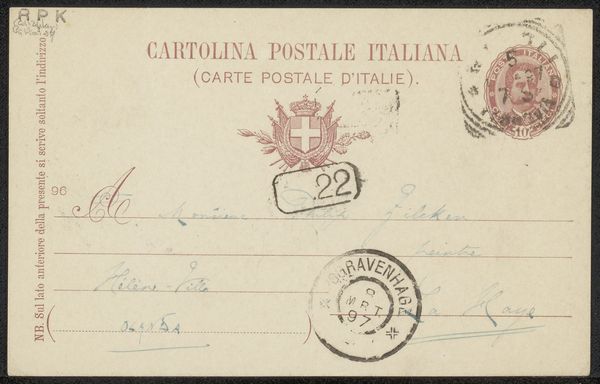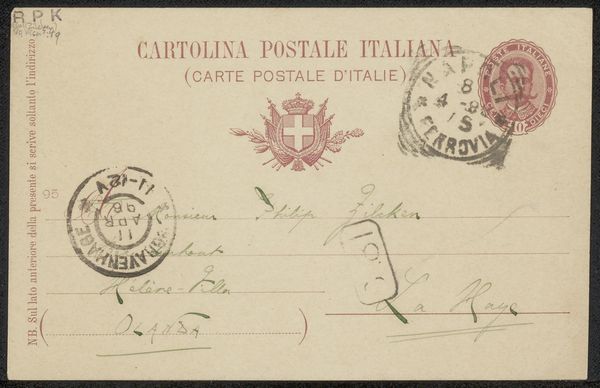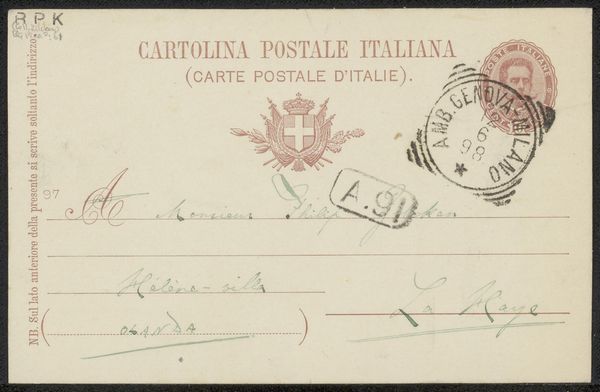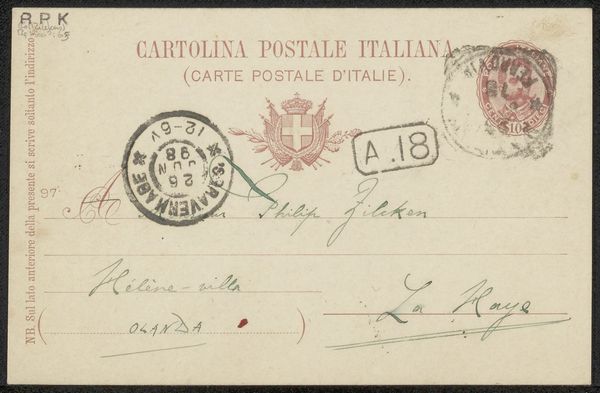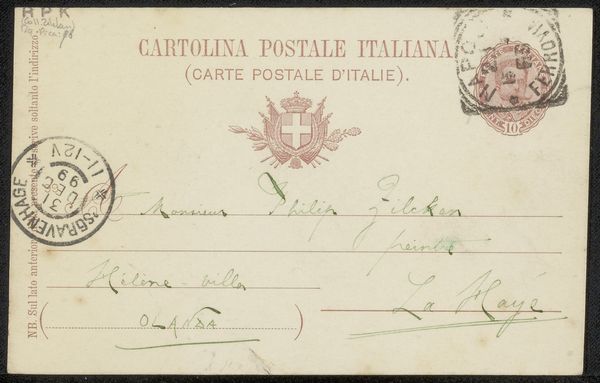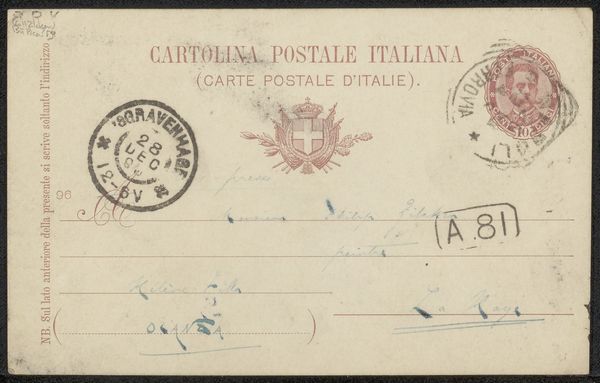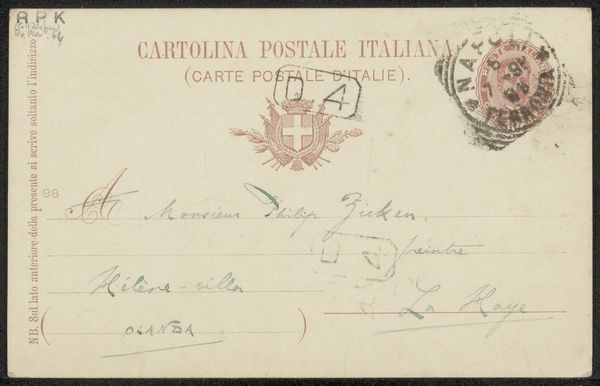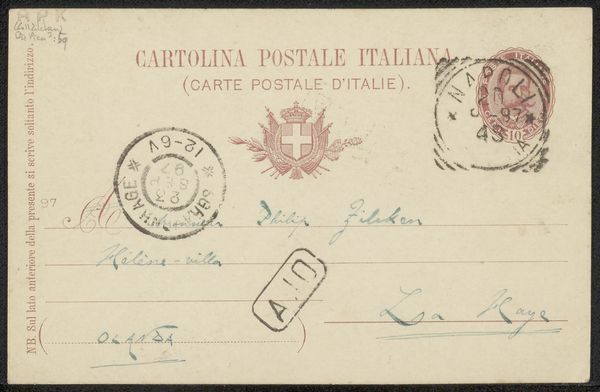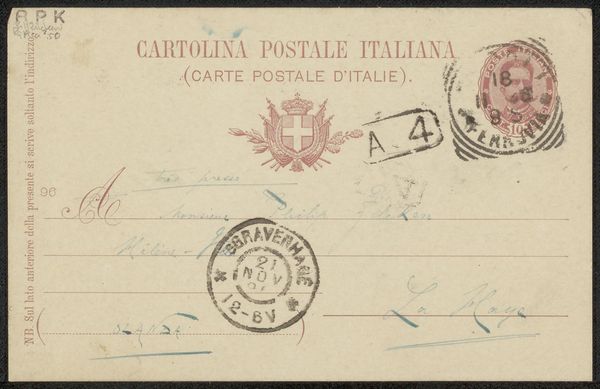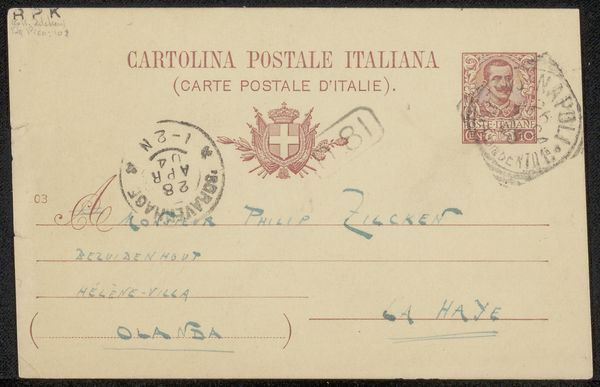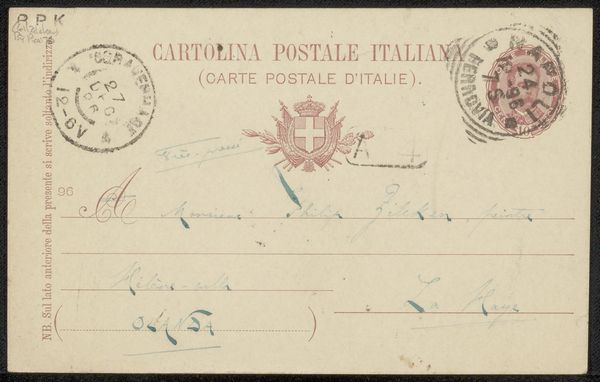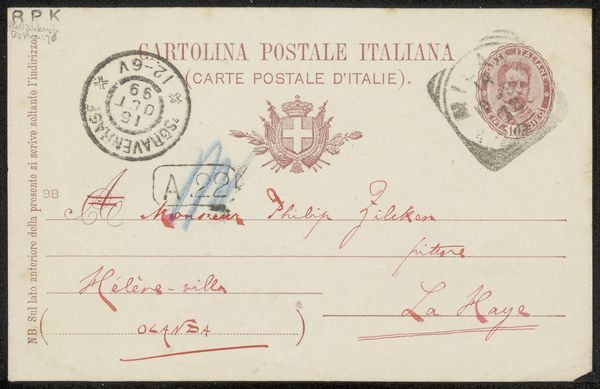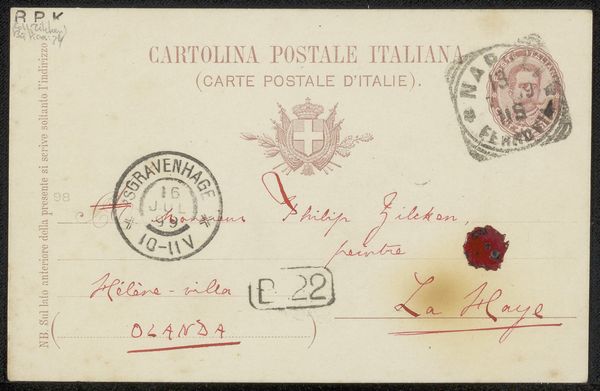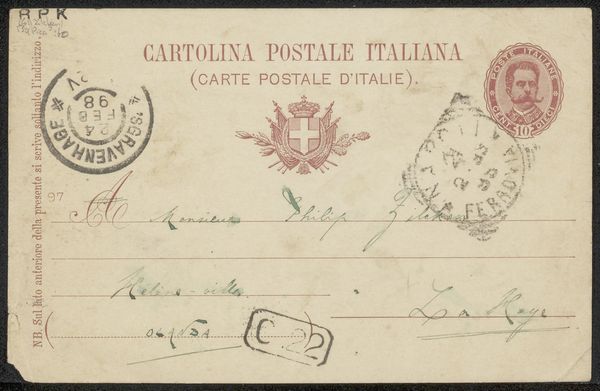
#
pen sketch
#
hand drawn type
#
personal sketchbook
#
ink drawing experimentation
#
pen-ink sketch
#
ink colored
#
pen work
#
sketchbook drawing
#
watercolour illustration
#
sketchbook art
Copyright: Rijks Museum: Open Domain
Curator: Look at this delicate artifact, “Briefkaart aan Philip Zilcken,” tentatively dated to 1899. It’s ostensibly just a postcard, but it functions as a miniature personal landscape crafted with ink, perhaps with a touch of watercolour. Editor: My first impression is one of intimacy. It's unassuming, personal, like stumbling upon a cherished private moment preserved in time. The faded ink and delicate handwriting whisper secrets. Curator: Indeed. Consider the significance of handwritten communication at the close of the 19th century. A postcard becomes a precious, tangible link between individuals, imbued with emotional weight that we might not ascribe to our digital missives today. Notice how the sender utilizes the formal Italian postal indicia almost as part of the aesthetic. Editor: Absolutely, the postal markings and stamps serve a dual purpose—both functional and decorative. The Italian coat of arms combined with what I imagine are postmarks almost becomes an emblem of cultural and national identity intertwined with the individual’s narrative. It underscores how even personal communication existed within a complex web of socio-political structures. Curator: Furthermore, analyze the chosen words and the penmanship itself. The flourishing script and concise messages convey a subtle emotional subtext. What unspoken thoughts linger between the lines? Each curve and stroke contains subtle visual information. Editor: The visual aspect and handwriting almost become one – each letter forming symbols carrying additional meanings and interpretations. The fading itself plays into our feeling of remembrance. The postcard feels like a time capsule revealing past connections, like holding someone else's memories in your hands. Curator: The casual and utilitarian nature of such an ephemeral form, like the humble postcard, makes you wonder: who was Phillip Zilcken and what relation did he have to the sender? Its simplicity prompts introspection about personal connections throughout history. Editor: Yes, it encourages reflection. What endures are these subtle glimpses into lives connected across time and distance, documented in a seemingly modest manner but infused with so much subtle nuance. These small artifacts can hold immense stories and powerful truths.
Comments
No comments
Be the first to comment and join the conversation on the ultimate creative platform.
